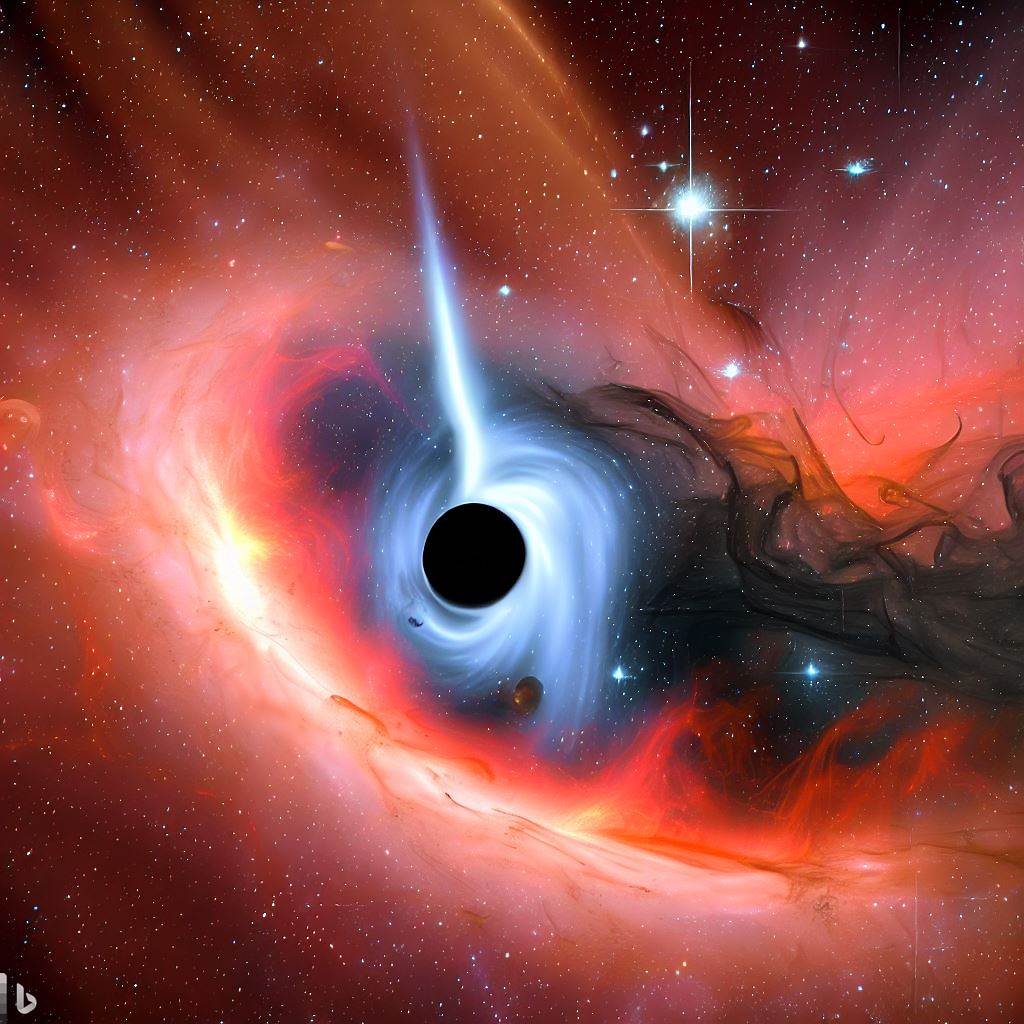Dark matter is thought to be 85% of all the matter in the universe but we have no idea what it is. All we know is that there appears to be something that exerts gravitational forces that behave like ordinary matter. One theory is that there are very old and very small black holes that were created soon after the Big Bang, primordial Black Holes. These black holes might be the mysterious dark matter that makes up most of the matter in the universe. Stefano Bondani, Matteo Bonetti, and Luca Broggi et al, want to study these black holes by looking at how they affect a very big black hole at the center of our galaxy, called Sagittarius A* . They think that some of these small black holes are orbiting around Sagittarius A* ( Sgr A*)and losing energy by sending out gravitational waves. Gravitational waves are ripples in space and time that can be detected by special instruments that use light to measure changes in the distance as the gravitational wave passes. If you remember the Pythagorean theorem from middle school which relates the length of the slanted side of a triangle to the length of the straight sides, then it is as if the gravitational wave changes that math a little when it passes.

What Is Dark Matter
Dark matter is a type of matter that we cannot see with our eyes or telescopes, but we know it exists because of its gravitational effects on other things in the universe. Scientists think that dark matter makes up about 85% of all the matter in the universe, but they don’t know what it is made of. Some possible candidates for dark matter are very old and very small black holes, or some new kind of subatomic particle that has not been discovered yet. Dark matter is important for understanding how the universe formed and evolved, and how galaxies and stars are held together by gravity. Scientists are trying to detect and study dark matter using different methods, such as looking at how it bends light from distant objects, or how it produces high-energy radiation when it collides with itself or other particles.
Gravitational Waves From Primordial Black Holes
The scientists want to use two instruments in space to detect these gravitational waves. One is called LISA and the other is called μAres. They are both like giant rulers, made with laser light, that can measure how space stretches and squeezes when a gravitational wave passes by. The scientists calculate how strong the gravitational waves from the small black holes would be and how many of them LISA and μAres could see. They also consider that the small black holes have different shapes and speeds when they orbit around Sgr A*.
LISA could see about 60% of the small black holes that are close enough to Sgr A* to send out strong gravitational waves. LISA could also see a weaker signal from many other small black holes that are farther away from Sgr A*. This signal would look like a background noise that changes over time. The scientists say that this signal is stronger when the small black holes have more oval-shaped orbits than when they have circular orbits.
They also find that μAres could see even more small black holes than LISA because it is more sensitive to lower frequency gravitational waves. μAres could see about one third of all the small black holes orbiting around Sgr A*. The rest of them would also make a background noise that μAres could detect.
Researchers concluded that these instruments could help us learn more about the small black holes and test if they are really the dark matter we are looking for.
A note on writing with AI assistance.
This article was written with assistance from Bing's GPT-4 based chat and their advanced Dall e 2 derived image generator. While this does save some labor it is not labor free. For instance getting the right image out of the images it generates takes several tries. Granted that is far less work that creating such an image by myself. Then there is the writing which while 75% to 85% there needs some tweaks and details added. Using AI to write or do anything else is like using a calculator or spreadsheet to do math. You have to know how to do it yourself without AI in order to make the best use of it. Now guess, was AI used on this last section of text or not?
References
Bondani, S., Bonetti, M., Broggi, L., Haardt, F., Sesana, A. and Dotti, M. Gravitational waves from an eccentric population of primordial black holes orbiting Sgr A* arXiv e-prints, 2023, pp. arXiv:2303.12868




Comments